Archived - Children
Archived information
This Web page has been archived on the Web. Archived information is provided for reference, research or record keeping purposes. It is not subject to the Government of Canada Web Standards and has not been altered or updated since it was archived. Please contact us to request a format other than those available.
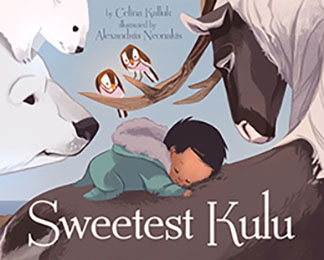
Sweetest Kulu
Celina Kalluk
Summary of Sweetest Kulu
This beautiful bedtime poem, written by acclaimed Inuit throat singer Celina Kalluk, describes the gifts given to a newborn baby by all the animals of the Arctic.
Lyrically and tenderly told by a mother speaking to her own little "Kulu," an Inuktitut term of endearment often bestowed upon babies and young children, this visually stunning book is infused with the traditional Inuit values of love and respect for the land and its animal inhabitants.
(Source: Inhabit Media)

Alego
Ningeokuluk Teevee
Summary of Alego
It's almost time for supper, and Alego goes with her grandmother to the shore to collect clams. Along the way, the girl discovers tide pools brimming with life — a bright orange starfish, a creepy crawly ugjurnaq, sea snails, and a sculpin.
A rising star of the famed Cape Breton Inuit art scene, author and illustrator Ningeokuluk Teevee draws on her own childhood experiences in the Arctic for this enchanting introduction to the life of an Inuit girl and her world. Printed in both Inuktitut and English, the book includes an illustrated glossary of the sea creatures in the story as well as a map of Baffin Island.
(Source: House of Anansi Press)

Sus Yoo / The Bear's Medicine
Clayton Gauthier, Danny Alexis,
Theresa Austin
Summary of Sus Yoo / The Bear's Medicine
A mother bear shares with her cubs how to be grateful for all they have in the natural world. The Bear's Medicine shows the interconnectedness of all things in the world they live in and how each season brings changes and blessings for the bears. It is a story of a mother's love for her children as she teaches them how to survive.
(Source: Theytus Books)

The Girl and the Wolf
Katherena Vermette, Julie Flett
Summary of The Girl and the Wolf
While picking berries with her mother, a little girl wanders too far into the woods. When she realizes she is lost, she begins to panic. A large grey wolf makes a sudden appearance between some distant trees. Using his sense of smell, he determines where she came from and decides to help her. Through a series of questions from the wolf, the little girl realizes she had the knowledge and skill to navigate herself—she just needed to remember that those abilities were there all along.
(Source: Theytus Books)

Fishing with Grandma
Susan Avinqac and Maren Vsetula
Summary of Fishing with Grandma
Adventure begins when Grandma takes her two grandchildren out for a trip to the lake. After showing the kids how to prepare for a fishing trip, Grandma and the kids enjoy a day of jigging in the ice for fish.
(Source: Inhabit Books)

Nuttah and Kitchi National Indigenous Peoples Day Celebration!
Written by Sandra Samatte, illustrated by Julian Grafenauer
Summary of Nuttah and Kitchi National Indigenous Peoples Day Celebration!
Written by Sandra Samatte, educator and author from Skownan First Nation, Treaty 2 Territory, and illustrated and designed by Julian Grafenauer, Ojibwe, from Rolling River First Nation, Treaty 4 Territory. National Indigenous Peoples Day is held on June 21st to honour and celebrate Canada's First Nations, Métis, and Inuit people, and to recognize the important achievements and contributions they have made. Join Nuttah & Kitchi from Skownan First Nation as they celebrate National Indigenous Peoples Day.
(Source: Goodminds.com)

Nibi's Water Song
Sunshine Tenasco, illustration by Chief Lady Bird
Summary of Nibi's Water Song
In Nibi's Water Song, an Indigenous girl named Nibi is on the search for clean water to drink. Though she faces repeated obstacles, Nibi's joyful energy and perseverance shines through. She becomes a catalyst for change and action as her community, and then in widening circles the country and government, rally to make clean drinking water available for everyone.
Kids will see that when the stakes are high and a problem seems too large to face, every small bit that someone does can help — and that inaction in the face of a wrong is not an option. In an incredible collaboration of talent, Chief Lady Bird's stunning original artwork conveys themes of strength, hope and resilience, while Sunshine Tenasco's amazing optimistic spirit shines through in her writing.
(Source: Scholastic)
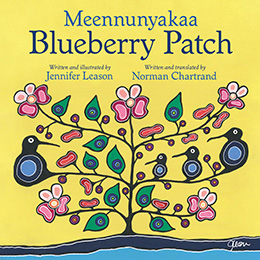
Blueberry Patch / Meennunyakaa
Jennifer Season Also available in Anishinaabemowin
Summary of Blueberry Patch / Meennunyakaa
Based in Duck Bay, Manitoba, in the 1940s, an Elder shares his experience of packing up to go out to collect blueberries, a traditional gathering that took place every summer. He describes the journey and landscape with humor and such vivid imagery that readers will see themselves there with him, boarding the trail of wagons from surrounding communities and heading east toward the blueberry patch. The Elder's stories offer a journey back in time and are complemented by images of fields of plump blueberries, tall green grass, bannock baking over an open fire, clear freshwater streams, and the tents the people slept in
(Source: Theytus Books)

The Orange Shirt Story
Phyllis Webstad
Summary of The Orange Shirt Story
When Phyllis Webstad (nee Jack) turned six, she went to the residential school for the first time. On her first day at school, she wore a shiny orange shirt that her Granny had bought for her, but when she got to the school, it was taken away from her and never returned. This is the true story of Phyllis and her orange shirt. It is also the story of Orange Shirt Day (an important day of remembrance for First Nations and non First Nations Canadians).
(Source: Medicine Wheel Education)

It's Time for Bed
Jeremy Debicki and Ceporah Mearns
Summary of It's Time for Bed
It's time for Siasi to go to bed, but she doesn't want to brush her teeth or put away her toys. It's so much more fun to play with all the animals of the Arctic! Wouldn't everyone rather dance with polar bear, howl with the wolves, and swim with the fish instead of get ready for bed? In this charming bedtime story, readers follow Siasi on a nighttime adventure as she comes up with excuse after excuse for why she's not quite ready to go to bed.
(Source: Strong Nations Publishing)

The Giant Bear
Jose Angutinngurniq (Inuit)
Also available in Inuktitut
Summary of The Giant Bear
One of the most terrifying creatures to be found in traditional Inuit stories is the nanurluk, a massive bear the size of an iceberg that lives under the sea ice. Its monstrous size and ice-covered fur make it an almost impenetrable foe. Jose Angutinngurniq, a gifted storyteller and respected elder from Kugaaruk, Nunavut, brings to life a story of the great nanurluk that has been told in the Kugaaruk region for generations.
(Source: Inhabit Media)

Bear for Breakfast (February 2019)
Robert Munsch, Illustrated Jay Odjick
Also available in Algonquin
Summary of Bear for Breakfast
Donovan wants to catch a bear for breakfast — but what does the bear want? (Scholastic)
It's breakfast time and Donovan knows exactly what he wants this morning! Not eggs, not pancakes, not cereal. No, what he wants is BEAR, just like his grandfather used to eat for breakfast!
So Donovan sets off to bag a bear of his own, going on an adventurous hunt through the woods, where he stalks and is stalked by an ant, a squirrel, and a dog — but they are not bears, so he shoos them away!
When Donovan finally meets a real, big and growling bear, he quickly learns that sometimes breakfast tastes best when it doesn't have any teeth! (Amazon)
This story was inspired by Donovan, a first-grader in in La Loche, Saskatchewan, a Chippewan community in northern Saskatchewan that Robert Munsch visited in January, 1990. When Robert asked what the kids liked to eat, Donovan said that he liked to eat BEAR! (Scholastic)
(Source: Scholastic Canada)

Kebaowek First Nation Kids Books
Kebaowek First Nation
Summary of Kebaowek First Nation Kids Books
This collection of children's books was created by Anicinabe Mikana, a cultural group in the community, for members of Kebaowek First Nation to use as a language resource to stimulate the revitalization of our language. All aspects of the book were done in community which included community members Jill Ladoucer, Author and Illustrator, Michelle St. Denis, Illustrator, and Suzanne Mapitchie, Algonquin Translator.
The collection features 6 short stories that are written in English, French, and Algonquin with each story accompanied by a CD Audio recording of a community youth reading the story in Algonquin.
(Source: Justin Roy)

My Heart Fills With Happiness/Ni Sâkaskineh Mîyawâten Niteh Ohcih
By Monique Gray Smith and Julie Flett
Summary of My Heart Fills With Happiness/Ni Sâkaskineh Mîyawâten Niteh Ohcih
The sun on your face. The smell of warm bannock baking in the oven. Holding the hand of someone you love. What fills your heart with happiness? This beautiful board book, with illustrations from celebrated artist Julie Flett, serves as a reminder for little ones and adults alike to reflect on and cherish the moments in life that bring us joy.
International speaker and award-winning author Monique Gray Smith wrote My Heart Fills with Happiness to support the wellness of Indigenous children and families, and to encourage young children to reflect on what makes them happy.
(Source: Orca Books)

Go Show the World: A Celebration of Indigenous Heroes
Wab Kinew
Illustrated by Joe Morse
Summary of Go Show the World: A Celebration of Indigenous Heroes
"We are a people who matter." Inspired by President Barack Obama's Of Thee I Sing, Go Show the World is a tribute to historic and modern-day Indigenous heroes, featuring important figures such as Tecumseh, Sacagawea and former NASA astronaut John Herrington.
Celebrating the stories of Indigenous people throughout time, Wab Kinew has created a powerful rap song, the lyrics of which are the basis for the text in this beautiful picture book, illustrated by the acclaimed Joe Morse. Including figures such as Crazy Horse, Net-no-kwa, former NASA astronaut John Herrington and Canadian NHL goalie Carey Price, Go Show the World showcases a diverse group of Indigenous people in the US and Canada, both the more well known and the not- so-widely recognized. Individually, their stories, though briefly touched on, are inspiring; collectively, they empower the reader with this message: "We are people who matter, yes, it's true; now let's show the world what people who matter can do."
(Source: Penguin Random House)

What's my Superpower?
Aviaq Johnston
Illustrated by Tim Mack
Summary of What's my Superpower?
Nalvana feels like all of her friends have some type of superpower. She has friends with super speed (who always beat her in races), friends with super strength (who can dangle from the monkey bars for hours), and friends who are better than her at a million other things.
Nalvana thinks she must be the only kid in town without a superpower.
But then her mom shows Nalvana that she is unique and special—and that her superpower was right in front of her all along.
(Source: Inhabit Media)

Takannaaluk
Herve Paniaq
Illustrated by Germaine Arnaktauyok
Summary of Takannaaluk
"Takannaaluk" means "the one down there"—a term used in Canada's High Arctic to refer to the most important being in Inuit mythology. Also known by Sedna, Nuliajuk, and many other names, Takannaaluk came to be both feared and respected as the mother of the sea mammals. But her story begins with a betrayal.
As a young woman, Takannaaluk is tricked into marrying a sea bird posing as a man and then abandoned by her family. In this unique picture book, her story is brought to vivid life by respected elder Herve Paniaq and renowned artist Germaine Arnaktauyok.
(Source: Inhabit Media)

The Origin of Day and Night
Paula Ikuutaq Rumbolt
Illustrated by Lenny Lishchenko
Summary of The Origin of Day and Night
In very early times, there was no night or day, and words spoken by chance could become real. When a hare and a fox meet and express their longing for light and darkness, their words are powerful enough to change the world forever.
Passed orally from storyteller to storyteller for hundreds of years, this beautiful illustrated story weaves together elements of an origin story and a traditional animal tale, giving young readers a window into Inuit mythology.
(Source: Inhabit Media)

Cloudwalker
Roy Henry Vickers and Robert Budd
Illustrated by Roy Henry Vickers
Summary of Cloudwalker
Cloudwalker, describing the creation of the rivers, is the second in a series of Northwest Coast legends by Roy Henry Vickers and Robert Budd. Their previous collaboration, Raven Brings the Light (2013), is a national bestseller.
On British Columbia's northwest coast lies the Sacred Headwaters—the source of three of British Columbia's largest salmon-bearing rivers. These rivers are the source of life for all creatures in the area. But what gave life to the rivers themselves?
Astace, a young Gitxsan hunter, is intent on catching a group of swans with his bare hands. He is carried away by the birds' powerful wings and dropped in the clouds. With only a cedar box of water Astace wanders the clouds, growing weaker, stumbling and spilling the contents. When he finally returns to earth he discovers lakes, creeks, and rivers where there were none before. The Gitxsan rejoice at having him home, and name the new river they live alongside Ksien—"juice from the clouds."
Roy Henry Vickers' vibrant artwork, including 18 new prints, accompany this new retelling of an ancient story—readers of all ages will be captivated.
(Source: Harbour Publishing)

Why the Monster
Rachel and Sean Qitsualik-Tinsley
Illustrated by Toma Feizo Gas
Summary of Why the Monster
Huuq is a young Inuit boy who has never fit in to camp life. One day, fleeing yet another attack from the camp bullies, Huuq finds himself alone and far away, with only his dog Qipik as company.
On a lonesome hill, Huuq and Qipik find an egg. But this is no ordinary bird's egg. It's big. And almost looks like a stone. When Huuq breaks this mysterious egg, it unleashes a series of events that turn Huuq himself into a monstrous half-human creature.
As Huuq tries to figure out why he has been turned into a monster, what the egg and its contents mean, and how he can return to his natural self, he is thrust into a world of fearsome creatures, mystical powers, and an evil the likes of which Huuq has never encountered.
(Source: Inhabit Media)

The Legend of Lightning and Thunder
Paula Ikuutaq Rumbolt
Illustrated by Jo Rioux
Summary of The Legend of Lightning and Thunder
In The Legend of Lightning and Thunder, a traditional legend that has been told in the Kivalliq region of Nunavut for centuries, two siblings resort to stealing from their fellow villagers, and inadvertently introduce lightning and thunder into the world. This beautifully illustrated traditional legend weaves together elements of an origin story and a traditional cautionary tale, giving young readers an accessible window into centuries-old Inuit mythology that is specific to the Kivalliq region of Nunavut.
(Source: Inhabit Medias)

When We Were Alone
David Alexander Robertson
Illustrated by Julie Flett
Summary of When We Were Alone
When a young girl helps tend to her grandmother's garden, she begins to notice things about her grandmother that make her curious. Why does her grandmother have long braided hair and wear beautifully coloured clothing? Why does she speak another language and spend so much time with her family? As she asks her grandmother about these things, she is told about life in a residential school a long time ago, where everything was taken away. When We Were Alone is a story about a difficult time in history and, ultimately, a story of empowerment and strength.
(Source: Portage and Main Press)

Joy of Apex
Napatsi Folger
Illustrated by Ann Kronheimer
Summary of Joy of Apex
Joy is ten years old, living in Apex, Nunavut, and loving life. But when Joy begins to notice her parents fighting a lot more than usual, her perfect life soon becomes a lot more complicated. As Joy navigates her parents' separation and its effect on her family, she learns some valuable lessons about how to cope when life gets tough. Told in the wry, funny voice of a smart and savvy girl, this book will appeal to young readers everywhere.
(Source: Inhabit Media)
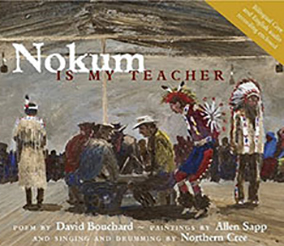
Nokum is My Teacher
David Bouchard
Illustrated by Allen Sapp
Summary of Nokum is My Teacher
Nokum Is My Teacher is the poetic story of a young aboriginal boy, posing questions to his grandmother, his "Nokum", about the wider world beyond the familiarity of their home and community. Through a series of questions, Nokum guides her grandson towards an understanding of his need to fit into and learn more about this large world beyond the reserve. Nokum offers her grandson a vision of a world he can enter through imagination and reading, while retaining respect for the ways of his people. By the conclusion of the book, the young grandson has learned many new ideas from his grandmother and discovered his own wisdom in dealing with the changes in his life.
(Source: Red Deer Press)

Stolen Words
Melanie Florence
Illustrated by Gabrielle Grimard
Summary of Stolen Words
The story of the beautiful relationship between a little girl and her grandfather. When she asks her grandfather how to say something in his language – Cree – he admits that his language was stolen from him when he was a boy. The little girl then sets out to help her grandfather find his language again. This sensitive and warmly illustrated picture book explores the intergenerational impact of the residential school system that separated young Indigenous children from their families. The story recognizes the pain of those whose culture and language were taken from them, how that pain is passed down, and how healing can also be shared.
(Source: Second Story Press)
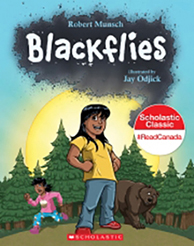
Blackflies!
Robert Munsch
Illustrated by Jay Odjick
Summary of Blackflies!
One day Helen wakes up and it's SPRING! The snow has melted and the sun is shining. But Helen knows that the blackflies will be coming out soon. So she does what any smart kid would do: she sends her little sister outdoors to check! When the blackflies and mosquitoes carry her away, Helen tells her dad, who rushes outside and is carried away himself. Now Helen needs to rescue BOTH of them, along with a wolf and a very clever bear…
(Source: Scholastic Canada)
Recommended by one of our followers. Thank you!
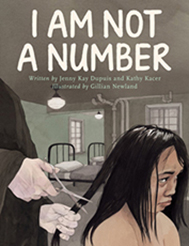
I am not a Number
Jenny Kay Dupuis and Kathy Kacer
Illustrated by Gillian Newland
Summary of I am not a Number
When eight-year-old Irene is removed from her First Nations family to live in a residential school she is confused, frightened, and terribly homesick. She tries to remember who she is and where she came from despite the efforts of the nuns to force her to do otherwise. When she goes home for summer holidays, her parents decide never to send her away again, but where will she hide and what will happen when her parents disobey the law?
(Source: Second Story Press)
Recommended by one of our followers. Thank you!
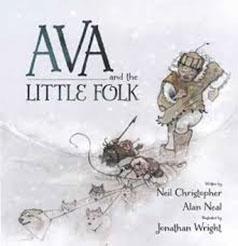
Ava and the Little Folk
Neil Christopher and Alan Neal
Illustrated by Jonathan Wright
Summary of Ava and the Little Folk
In the Arctic, tales of tiny people who live on the land abound. This children's story follows the adventures of an orphan named Ava who is left to fend for himself by the adults in his village. One day, cold and alone, Ava stumbles upon a group of magical dwarves who finally show him how it feels to have a home of his own.
(Source: Strong Nations online bookstore)
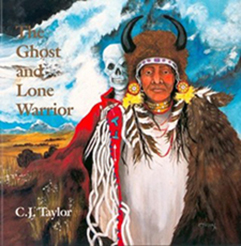
The Ghost and Lone Warrior
C.J. Taylor
Summary of The Ghost and Lone Warrior
Crippled in an accident and left behind by his hunting party, Lone Warrior must overcome hunger, cold, pain, and despair to survive. But most terrifying of all his trials is the appearance of a skeleton-ghost arisen from the grave. That Lone Warrior can still remember to express his gratitude to the animal he must kill to survive, and that he does not allow fear to diminish his dignity, makes him an ideal hero.
(Source: Strong Nations)

Northern Lights: The Soccer Trails
Michael Kusugak
Illustrated by Vladyana Krykorka
Summary of Northern Lights: The Soccer Trails
"Northern Lights" is a beautiful tale that explores the mystical aspects of the northern lights in Inuit culture. Scientists have their own explanations for the phenomenon that occurs when the night sky shimmers with milky white patterns, or displays all the colors of the rainbow. But the Inuit prefer their own explanation: They believe the souls of the dead are engaging in a lively game of soccer, just as they did when they were living. They run all over the sky chasing a walrus head that they use for a soccer ball. This is the story of Kataujaq and the intimate relationship she has with her mother. They do almost everything together; they hug, rub noses and say "Mamaq" which means "You smell so nice." But a great sickness comes and Kataujaq's mother is taken south to the white people's hospital and never comes back. Kataujaq grieves, but is also able to rejoice when she and her grandmother watch the northern lights. This book celebrates family life, intimacy and the glory of nature.
(Source: Powell Books)

You Hold Me Up
Monique Gray Smith
Illustrated by Danielle Daniel
Summary of You Hold Me Up
This vibrant picture book, beautifully illustrated by celebrated artist Danielle Daniel, encourages children to show love and support for each other and to consider each other's well-being in their everyday actions. Consultant, international speaker and award-winning author Monique Gray Smith wrote You Hold Me Up to prompt a dialogue among young people, their care providers and educators about reconciliation and the importance of the connections children make with their friends, classmates and families. This is a foundational book about building relationships, fostering empathy and encouraging respect between peers, starting with our littlest citizens.
(Source: Stoddard Kids Publishing)

Firedancers
Jan Bourdeau Waboose - C.J. Taylor
Summary of Firedancers
As night sets in and the fire crackles, a young native girl is amazed when her grandmother invokes the spirits of their ancestors. She learns the mystical firedance and creates a bond with her people and their heritage that will last a lifetime.
(Source: Stoddard Kids Publishing)
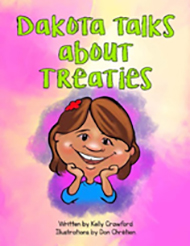
Dakota Talks about Treaties
Kelly Crawford
Illustrated by Donald Chrétien
Summary of Dakota Talks about Treaties
'Dakota Talks about Treaties' is about Dakota's experience at the 250th anniversary of the Treaty of Niagara. She learns about wampum, treaties and the importance of them.
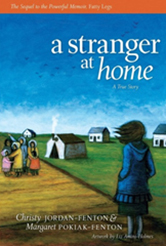
A Stranger at Home
Christy Jordan-Fenton and Margaret Pokiak-Fenton
Illustrated by Liz Amini-Holmes
Summary of A Stranger at Home
Ten-year-old Margaret can hardly contain her excitement. After two years in a residential boarding school she is finally headed for home. But when she stands before her family at last, her mother doesn't recognize her, shouting, "Not my girl!" This was hardly the homecoming Margaret expected. She has forgotten her people's language and can't stomach her mother's food. She isn't even allowed to play with her friend Agnes, because she is now seen as one of the despised outsiders. She has become a stranger to her own people. In this extraordinary sequel to Fatty Legs (Les bas du pensionnat) Margaret must begin a painful journey of learning how to fit again, and reconcile her old self with the new.
(Source: Annick Press)

What is Truth, Betsy?: A Story of Truth
Katherena Vermette
Illustrated by Irene Kuiw
Summary of What is Truth, Betsy?: A Story of Truth
Miskwaadesi is puzzled about the teaching Truth. But she knows more than she thinks she does. "What is Truth, Betsy?" is one book in The Seven Teachings Stories series. The Seven Teachings of the Anishinaabe—love, wisdom, humility, courage, respect, honesty, and truth—are revealed in seven stories for children. Set in urban landscapes, Indigenous children tell familiar stories about home, school, and community.
(Source: Portage and Main Press)
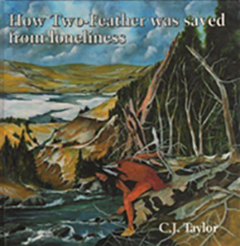
How Two-Feather was saved from loneliness
C.J. Taylor
Summary of How Two-Feather was saved from loneliness
Two-Feather had been wandering all winter, lonely and hungry. One spring night he goes to sleep to forget the despair, only to be awakened by a voice calling his name. It is a woman, so beautiful that Two-Feather immediately falls in love with her, and begs for her to stay with him forever. The woman leads him over mountains and through forests. Two-Feather obeys her every command, even the last, most difficult, only to find she has left him, but not without ensuring that he will never be lonely or hungry again.
(Source: Barnes & Noble)
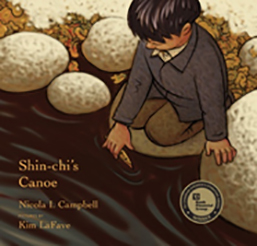
Shin-chi's canoe
Nicola I. Campbell
Illustrated by Kim LaFave
Summary of Shin-chi's canoe
This moving sequel to the award-winning Shi-shi-etko tells the story of two children's experience at residential school. Shi-shi-etko is about to return for her second year, but this time her six-year-old brother, Shin-chi, is going, too. As they begin their journey in the back of a cattle truck, Shi-shi-etko tells her brother all the things he must remember: the trees, the mountains, the rivers and the salmon. Shin-chi knows he won't see his family again until the sockeye salmon return in the summertime.
(Source: House of Anansi Press)

The Honour Drum
Cheryl Bear and Tim Huff
Summary of The Honour Drum
The Honour Drum is a uniquely envisioned and crafted project shared between two Canadian friends—an Indigenous woman from the west coast and a non-Indigenous man from Ontario—to reach children, families and classrooms across Canada and around the world with a message of great beauty and truth that should not be ignored. This vibrant book is an important starting place for learning and insight that are vital and, for many people of all ages, overdue. The Honour Drum is a love letter to the Indigenous people of Canada and a humble bow to Indigenous cultures around the world.
(Source: Castle Quay Books)
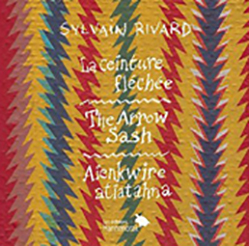
The Arrow Sash
Sylvain Rivard
Summary of The Arrow Sash
Inspired by Why Books, this beautifully illustrated book opens with a question from a child wanting to know more about the arrow sash. The grandmother answers his questions about the arrow sash and each story is more colourful and interesting than the last. The stories of the arrow sash explain the origin, the meaning, and the use of this object by Haudenosaunee People. This is the first book in a series on First Nations clothing. The Arrow Sash/ La ceinture fléchée/ Aienkwire atiatahna is triligual, and available in French, English, and also in Mohawk.

As Long as the Rivers Flow
Larry Loyie With the participation of Constance Brissenden
Illustrated by Heather D. Holmlund
Summary of As Long as the Rivers Flow
In the 1800s, the education of First Nations children was taken on by various churches in government-sponsored residential schools. Children were forcibly taken from their families in order to erase their traditional languages and cultures. As Long as the Rivers Flow is the story of Larry Loyie's last summer before entering residential school. It is a time of learning and adventure. He cares for an abandoned baby owl, watches his grandmother make winter moccasins, and helps the family prepare for a hunting and gathering trip.
(Source: GoodReads)

The Water Walker
Joanne Robertson
Illustrated by Joanne Robertson
Summary of The Water Walker
The story of a determined Ojibwe Grandmother (Nokomis) Josephine Mandamin and her great love for Nibi (water). Nokomis walks to raise awareness of our need to protect Nibi for future generations and for all life on the planet. She, along with other women, men, and youth have walked around all the Great Lakes from the four salt waters or oceans to Lake Superior. The walks are full of challenges and by her example Josephine challenges us all to take up our responsibility to protect our water: the giver of life, and to protect our planet for all generations.
(Source: Second Story Press)

SHI-SHI-ETKO
Nicola I. Campbell
Illustrated by Kim Lafave
Summary of SHI-SHI-ETKO
In just four days young Shi-shi-etko will have to leave her family and all that she knows to attend residential school. She spends her last days at home treasuring the beauty of her world -- the dancing sunlight, the tall grass, each shiny rock, the tadpoles in the creek, her grandfather's paddle song. Her mother, father and grandmother, each in turn, share valuable teachings that they want her to remember. And so Shi-shi-etko carefully gathers her memories for safekeeping. Richly hued illustrations complement this gently moving and poetic account of a child who finds solace all around her, even though she is on the verge of great loss -- a loss that native people have endured for generations because of the residential schools system.
(Source: House of Anansi Press)

Akilak's Adventure
Deborah Kigjugalik Webster
Illustrated by Charlene Chua
Summary of Akilak's Adventure
When Akilak must travel a great distance to another camp to gather food, she thinks she will never be able to make it. With a little help from her grandmother's spirit, and her own imagination to keep her entertained, Akilak manages to turn a long journey into an adventure. Even though she at first feels that she will never be able to reach her destination, she keeps her grandmother's assurance that her "destination is not running away; it will be reached eventually" in mind and ends up enjoying the journey that at first seemed so daunting.
(Source: Inhabit Media)

We Sang You Home
Richard Van Camp
Illustrated by Julie Flett
Summary of We Sang You Home
In this sweet and lyrical board book, gentle rhythmic text captures the wonder new parents feel as they welcome baby into the world. A celebration of the bond between parent and child, this is the perfect song to share with your little ones.
(Source: Orca Book Publishers)

Hiawatha and the Peacemaker
Robbie Robertson
Illustrated by David Shannon
Summary of Hiawatha and the Peacemaker
Born of Mohawk and Cayuga descent, musical icon Robbie Robertson learned the story of Hiawatha and his spiritual guide, the Peacemaker, as part of the Iroquois oral tradition. Now he shares the same gift of storytelling with a new generation. Hiawatha was a strong and articulate Mohawk who was chosen to translate the Peacemaker's message of unity for the five warring Iroquois nations during the 14th century. This message not only succeeded in uniting the tribes but also forever changed how the Iroquois governed themselves—a blueprint for democracy that would later inspire the authors of the U.S. Constitution.
(Source: Abrams Books for Young Readers)

Muin and the Seven Bird Hunters
Prune Harris and Lillian Marshall
Summary of Muin and the Seven Bird Hunters
The story of Muin and the Seven Bird Hunters is a very old Mi'kmaw legend. It happens in the North Sky as the stars that show the story of Muin and the Seven Bird Hunters move around Tatapn, the North Star. In the pictures in this book you can see how these stars, shown as they appear two hours before dawn, move through the night sky. They are in a different position in each of the seasons because they are the time-keepers, they are the calendar. All through the year, as the stars and planets travel through the sky, the Mi'kmaq watch the story of Muin and the Seven Bird Hunters as it unfolds before their eyes.
(Source: Cape Breton University Press)

Sometimes I Feel Like a Fox
Danielle Daniel
Summary of Sometimes I Feel Like a Fox
In this introduction to the Anishinaabe tradition of totem animals, young children explain why they identify with different creatures such as a deer, beaver or moose. Delightful illustrations show the children wearing masks representing their chosen animal, while the few lines of text on each page work as a series of simple poems throughout the book.
(Source: Chapters)
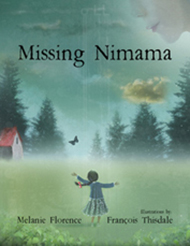
Missing Nimama
Melanie Florence
Illustrated by Francois Thisdale
Summary of Missing Nimama
Kateri is a young girl, growing up in the care of her grandmother. We see her reaching important milestones her first day of school, first dance, first date, wedding, first child along with her mother, who is always there, watching her child growing up without her. Told in alternating voices, Missing Nimama is a story of love, loss, and acceptance, showing the human side of a national tragedy. An afterword by the author provides a simple, age appropriate context for young readers.
(Source: Chapters)

Una Huna?: What is this?
Susan Aglukark
Illustrated by Amanda Sandland and Danny Christopher
Summary of Una Huna?: What is this?
Ukpik loves living in her camp in the North with her family. When a captain from the south arrives to trade with Ukpik's father, Ukpik is excited to learn how to use the forks, knives, and spoons he brings with him.
At first, Ukpik enjoys teaching the other children how to use these new tools. But soon, she starts to wonder if they'll need to use the new tools all the time, and if that means that everything in camp will change.
After a conversation with her grandmother, Ukpik realizes that even though she will learn many new things, her love for her family and camp will never change.
(Source: Inhabit Media)